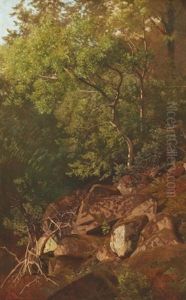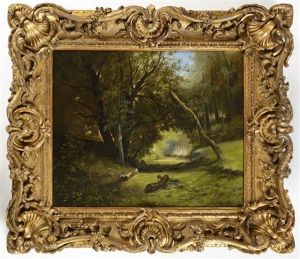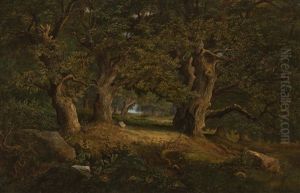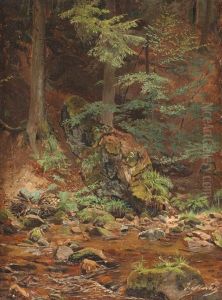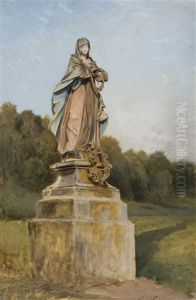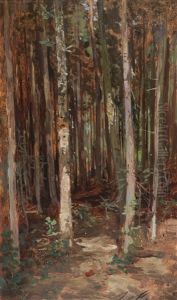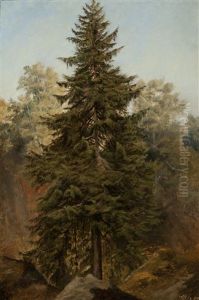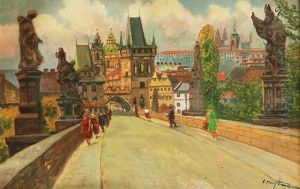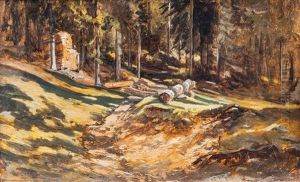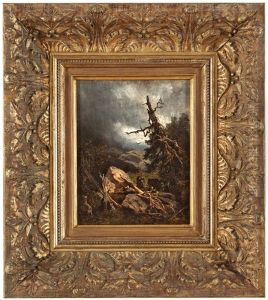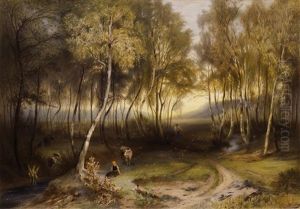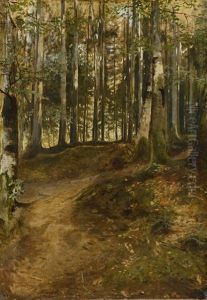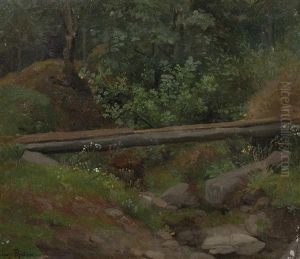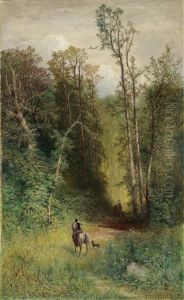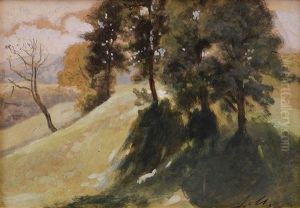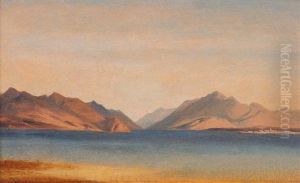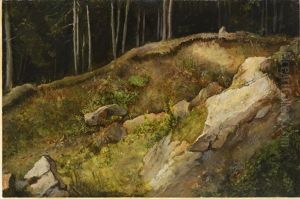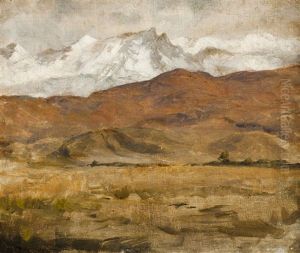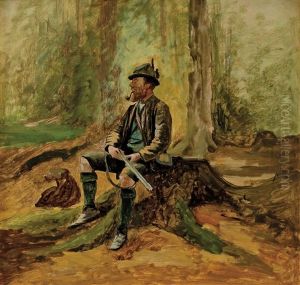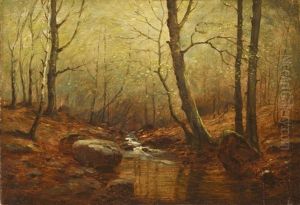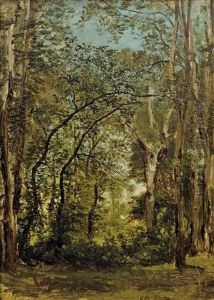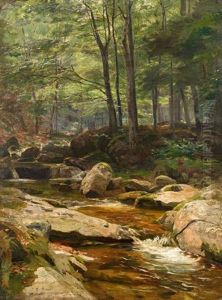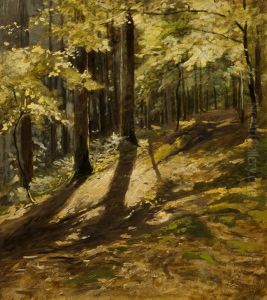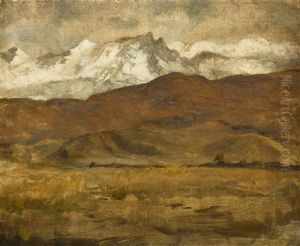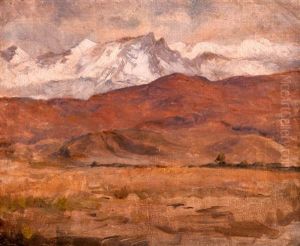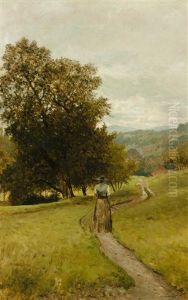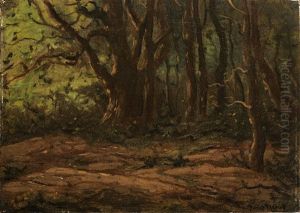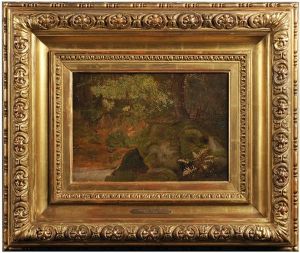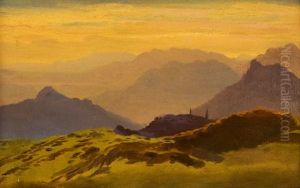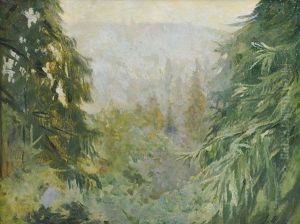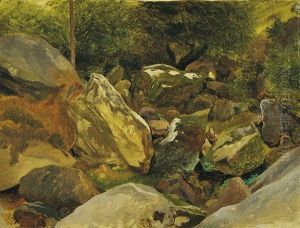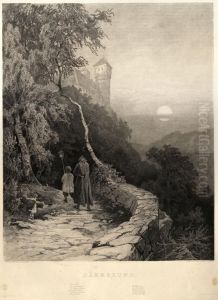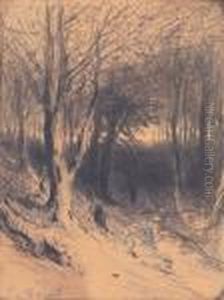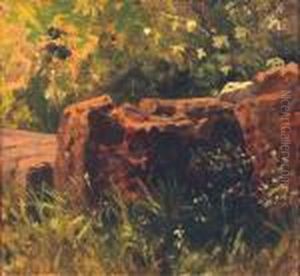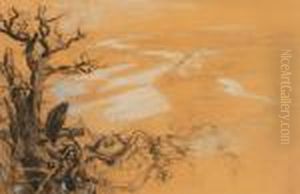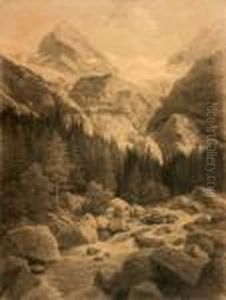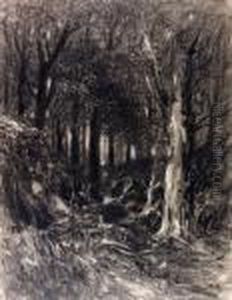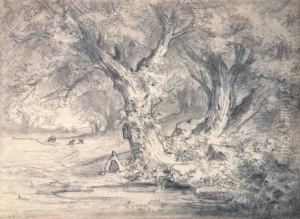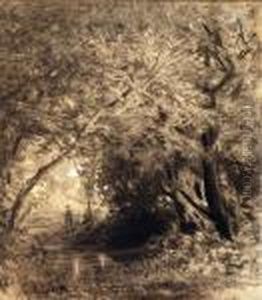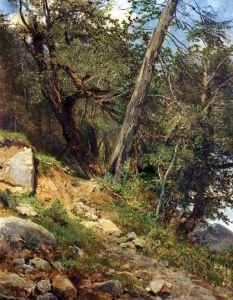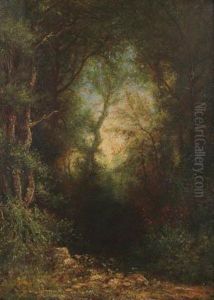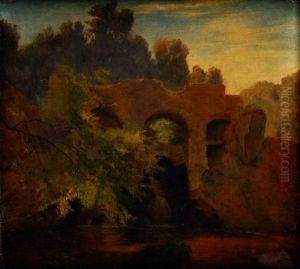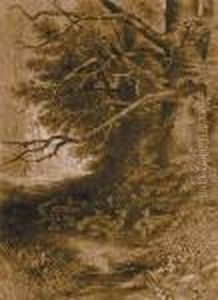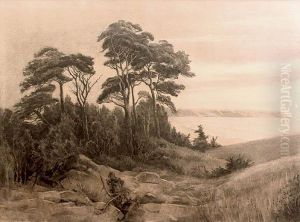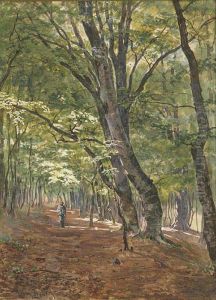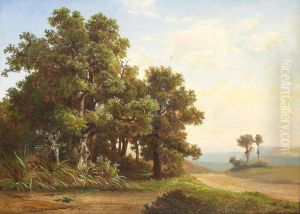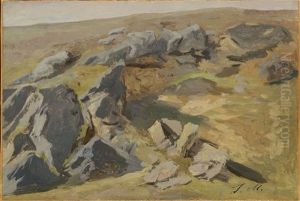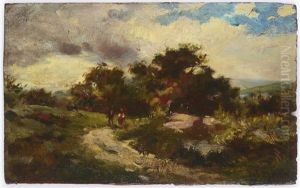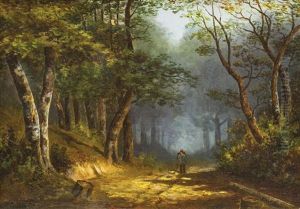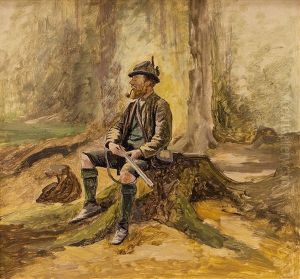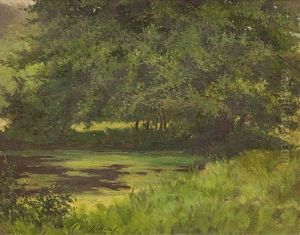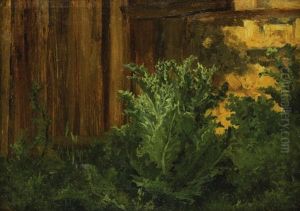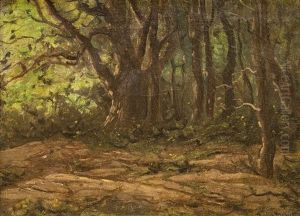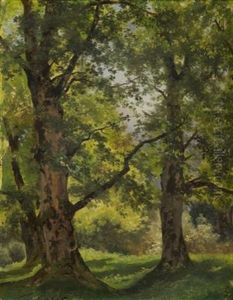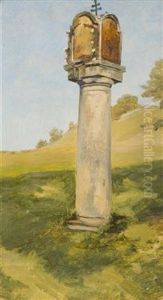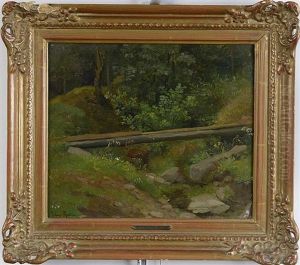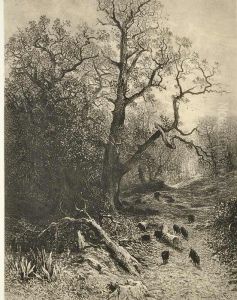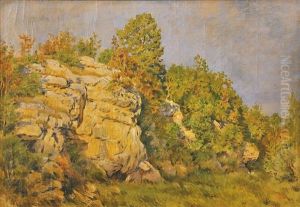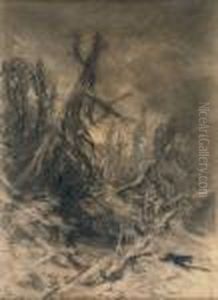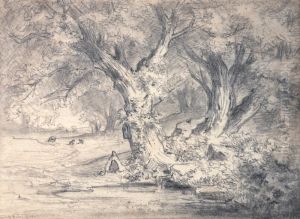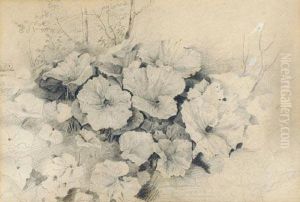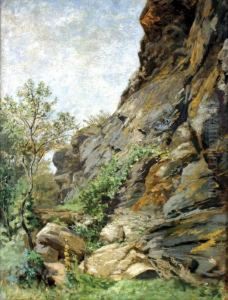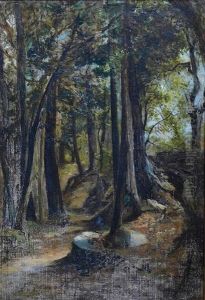Julius Eduard Marak Paintings
Julius Eduard Marak was a notable Czech landscape painter who became a significant figure in the 19th-century Czech art scene. Born on February 12, 1832, in Kroměříž, Moravia, which at the time was part of the Austrian Empire and is now in the Czech Republic, Marak showed an early talent for art. He initially studied at the Academy of Fine Arts in Vienna, where he honed his skills under the guidance of prominent artists of the time.
After his studies in Vienna, Marak further developed his artistic approach under the influence of the Barbizon school during his stay in France. His works began to reflect the Barbizon emphasis on naturalism and the depiction of rural landscapes. Marak's paintings are characterized by their realistic portrayal of the Czech countryside, featuring forests, fields, and rural villages, often highlighting the changing seasons and the interplay of light and shadow.
Marak returned to Bohemia and became an influential professor at the Academy of Fine Arts in Prague, where he taught many students who would go on to contribute significantly to Czech art. His teaching and his landscape paintings played a vital role in the development of Czech national art in the latter half of the 19th century.
Throughout his career, Marak was recognized for his artistic achievements. He received numerous awards and his works were exhibited in various prestigious art shows across Europe. Julius Eduard Marak's legacy is preserved through his contributions to Czech art education and the lasting appeal of his landscape paintings, which continue to be admired for their serene beauty and technical mastery.
Marak's later years were marked by declining health, which eventually led to his death on May 21, 1899, in Prague. Despite the challenges he faced later in life, his work remained influential, and he is remembered as a key figure in Czech art history, whose landscapes are cherished for their poetic depiction of the Bohemian countryside.
